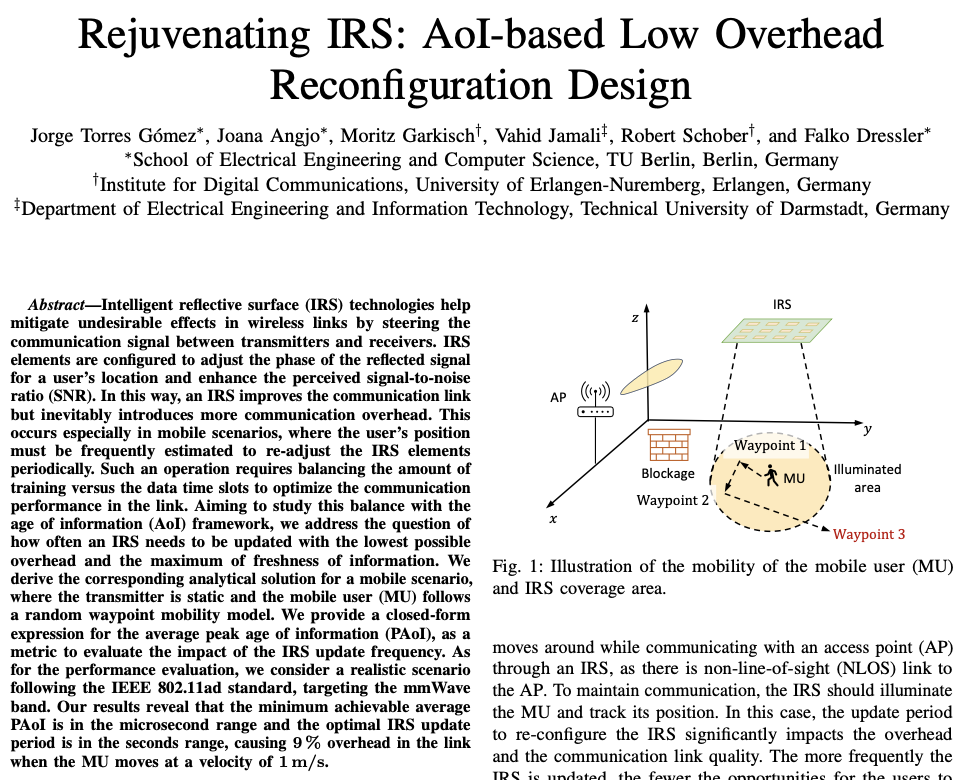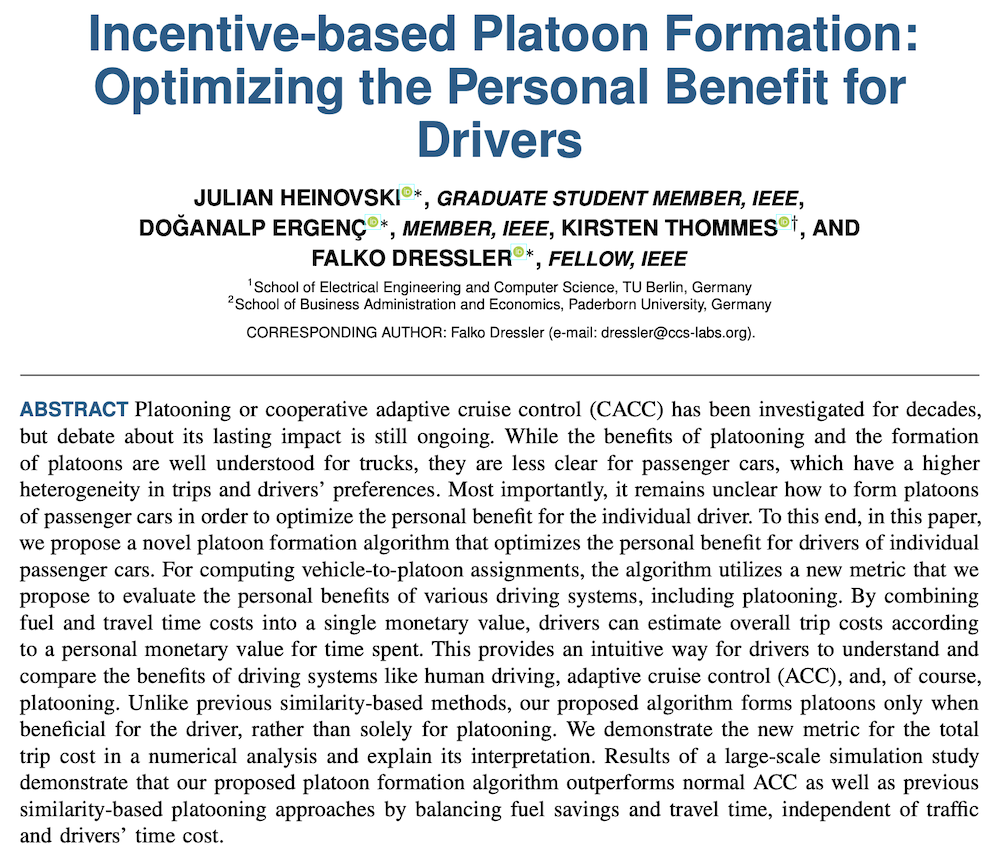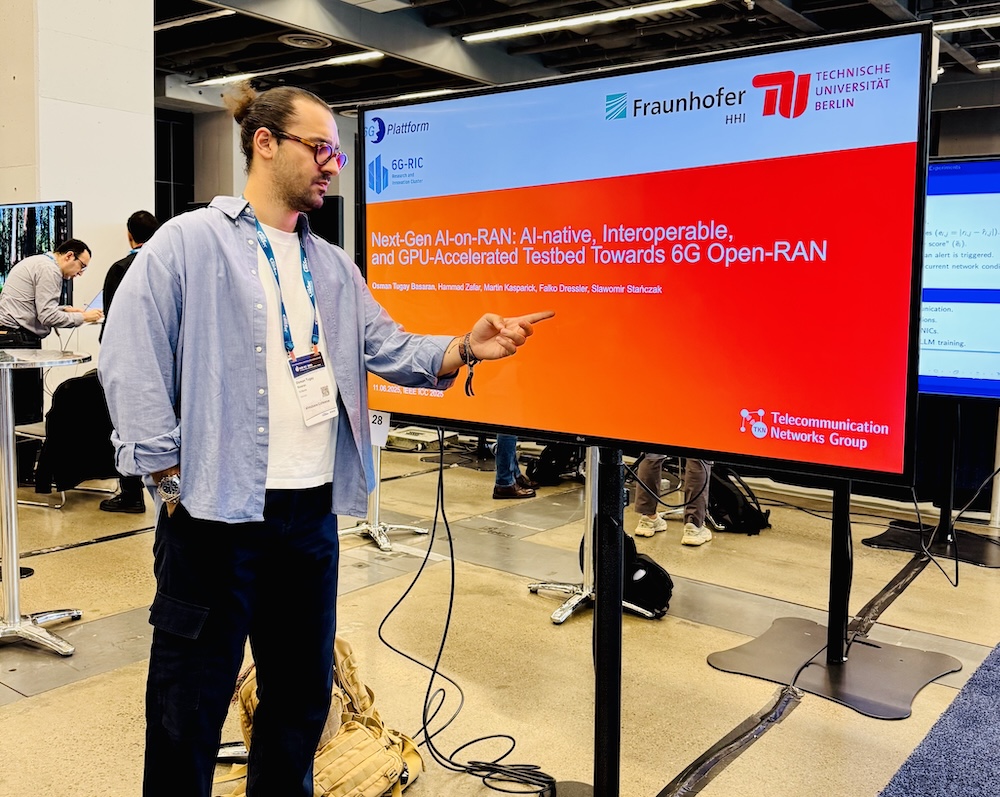Literature Database Entry
baguena2012realistic
Miguel Baguena, Carlos T. Calafate, Juan-Carlos Cano and Pietro Manzoni, "Towards realistic vehicular network simulation models," Proceedings of IFIP Wireless Days (WD 2012), Dublin, Ireland, November 2012, pp. 1–3.
Abstract
Recently, testbed deployments using real IEEE 802.11p devices have allowed making performance measurements using this technology. The results obtained in those experiments evidence that lots of factors influence wireless communications: small obstacles like trees, small moving obstacles like cars, or large obstructions like buildings. All of them affect the transmission range, reducing the communication possibilities. Based on the insight provided by these results, in this work we propose a propagation model that attempts to replicate all these effects in simulation in order to increase the accuracy of experiments. Our solution combines (i) an attenuation model that replicates transmission range and fading behavior of real 802.11p devices, both in line-of-sight conditions and when obstructed by small obstacles, and (ii) a visibility model to deal with large architectonic obstacles, such as buildings. Our model was evaluated using the OMNeT++ platform, and positions, results show that having the exact building and shapes is a critical parameter, introducing performance differences of up to 50% compared to simpler models.
Quick access
Original Version ![]() (at publishers web site)
(at publishers web site)
BibTeX ![]()
Contact
Miguel Baguena
Carlos T. Calafate
Juan-Carlos Cano
Pietro Manzoni
BibTeX reference
@inproceedings{baguena2012realistic,
author = {Baguena, Miguel and Calafate, Carlos T. and Cano, Juan-Carlos and Manzoni, Pietro},
doi = {10.1109/WD.2012.6402805},
title = {{Towards realistic vehicular network simulation models}},
pages = {1--3},
address = {Dublin, Ireland},
booktitle = {IFIP Wireless Days (WD 2012)},
month = {11},
year = {2012},
}
Copyright notice
Links to final or draft versions of papers are presented here to ensure timely dissemination of scholarly and technical work. Copyright and all rights therein are retained by authors or by other copyright holders. All persons copying this information are expected to adhere to the terms and constraints invoked by each author's copyright. In most cases, these works may not be reposted or distributed for commercial purposes without the explicit permission of the copyright holder.
The following applies to all papers listed above that have IEEE copyrights: Personal use of this material is permitted. However, permission to reprint/republish this material for advertising or promotional purposes or for creating new collective works for resale or redistribution to servers or lists, or to reuse any copyrighted component of this work in other works must be obtained from the IEEE.
The following applies to all papers listed above that are in submission to IEEE conference/workshop proceedings or journals: This work has been submitted to the IEEE for possible publication. Copyright may be transferred without notice, after which this version may no longer be accessible.
The following applies to all papers listed above that have ACM copyrights: ACM COPYRIGHT NOTICE. Permission to make digital or hard copies of part or all of this work for personal or classroom use is granted without fee provided that copies are not made or distributed for profit or commercial advantage and that copies bear this notice and the full citation on the first page. Copyrights for components of this work owned by others than ACM must be honored. Abstracting with credit is permitted. To copy otherwise, to republish, to post on servers, or to redistribute to lists, requires prior specific permission and/or a fee. Request permissions from Publications Dept., ACM, Inc., fax +1 (212) 869-0481, or permissions@acm.org.
The following applies to all SpringerLink papers listed above that have Springer Science+Business Media copyrights: The original publication is available at www.springerlink.com.
This page was automatically generated using BibDB and bib2web.








